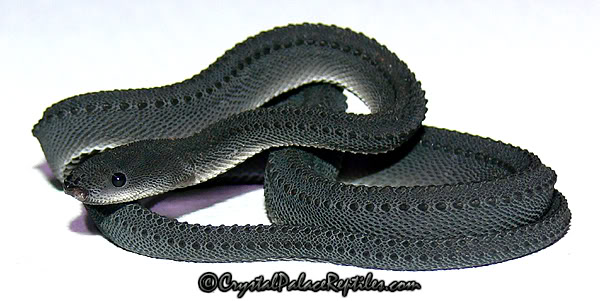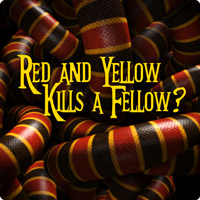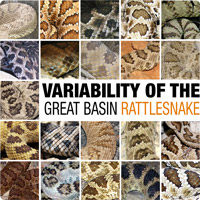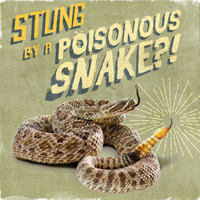A recent post in a forum I frequent, reminded me that I totally forgot to include one of my favorite snakes in my recent Halloween blog. Few snakes are either this cool, or unusual.
Though discovered in 1846, this unique serpent, called Xenodermus javanicus by scientists, is very rare in the pet trade, and is still quite unknown, even amongst herpetologists. There is very limited information about this snake on-line or elsewhere, and its relative ambuguity, has led to several common names, adding to its mystery. Commonly called the Dragon snake, Javan Mudsnake and Tubercle Snake, this animal, found in Southeast Asia, and belongs to its own genus, meaning that it currently has no close relatives currently accepted by science.
Boring details aside, how amazing are the scales on this snake?!? It looks like a cross between a snake and a crocodilian, making it easy to see why some commonly call it the Dragon Snake.
The albino example of the Dragon snake above, does indicate that breeding projects do exist, and may indicate that this snake will become better known as more hobbyists observe the animal in captivity.
Here’s to mother nature for continuing to keep us on our toes! I hope you enjoyed this quick introduction to yet another intriguing animal, and asure you that there is more to come!
Make sure to like our page, and sign up for notifications, and we will email you each time we write an article about these exciting snakes!
Your Snake Buddy,
Jamison









Pingback: 2010 in review | Snakebuddies' Blog
so are these dragon snakes available in the US? and how much do they usually cost?
Cool info. When my children get bigger, I’m getting back into collecting as well a continuing to educate them on the wonderful reptile…the snake.
Thanks Alan. I’m not much of a collector, but I love educating people, and there is absolutely nothing better than seeing them in the wild.
Pingback: These guys look amazing!!! - sSNAKESs : Reptile Forum
cant figure out if this is a photoshopped picture. have yet to find any info anywhere on this reptile. would love to have one of my own, although without the scientific name being recognized ANYWHERE… i have a feeling this way be difficult
The snake is indeed real, and the photo unedited. These will certainly become more main stream – eventually. If you goole it, you’ll find more info now on these cool critters. There are at least twice as many articles now, as there were when I wrote this blog a year ago. And I think I heard rumor that a scientific name had been considered. Thanks for reading!
Jamison
Are these dragon snakes poisonous?
Melanie,
No they are not. That is to say, with the still incomplete information we have on them, they have not been shown to possess venom that would be considered harmful to humans.
Thanks for the question!
Jamison
what is the scientific name of this species?
Hey Herp,
If you read the article, you will see that the species is currently identified scientifically, as Xenodermus javanicus.
Thanks!
Jamison
These snake are known as impossible to keep alive in captivity
Yes they are, Josh. Thanks for adding this!
SnakeBuddies
I love the look of these snakes. Just wondering if these are available to own in.Australia
Justin,
As far as I know, they are legal to own, but I have no idea if they are available in Australia or not. From what I have seen, very few are available for purchase anywhere, and those that are, are very expensive. Sorry I can’t be of more help.
Jamison
I DETEST snakes. But this dragon snake I like.
this snake also have a defensive strategy (playing dead)
“The albino example of the Dragon snake above, does indicate that breeding projects do exist,” actually this was a WC specimen imported by CPR, sadly Xenodermus javanicus have never been bred in captivity, even very experienced keepers struggle to keep them alive for longer than a few months.
Thanks for adding that information, Xenofan! Obviously, many snakes are best left in the wild, and we often do not realize the impact we have on a species when we collect it, and it does not thrive. We then look to replace the animal, and most species simply cannot recover quickly enough to not be negatively impacted by that kind of demand.
Thanks again!
SnakeBuddies
First that ive seen its got my intrest especialy after i thought nothing new to see ,i apriciateit alot opened my eyes again